Cold Weather: [Characteristics, Flora, Fauna and Adaptability]
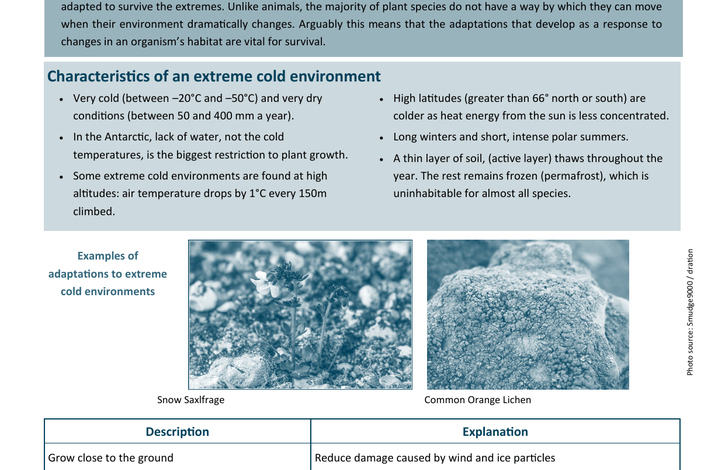
Important Points About Freezing Weather:
- What is? The icy climate is the coldest on the entire planet, registering at certain times the lowest points in terms of temperature.
- Where it is located? The location of the frigid climate is one of the most precise that exists because it is only found in the arctic and antarctic areas.
- What flora predominates? This is the only climate where vegetation does not exist, because the soil never reaches a favorable condition for reproduction.
- What fauna predominates? At the terrestrial level it is very difficult to find any kind of fauna. During the “summers”, it is possible to see a polar bear or an arctic wolf walking, but they do not stay there during the winter.
- How long is the day and night? The year is divided into two parts: one illuminated and one dark. Each one lasts approximately 6 months and occurs in the polar areas.
- Can humans live in this climate? The conditions of the icy climate are especially hostile for the settlement of human life, so life is not possible in its vicinity.
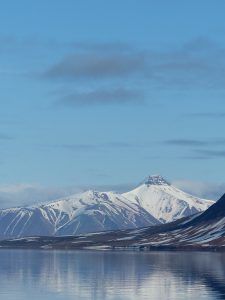 Cold, very cold, unbelievably cold… that’s the simplest and most accurate way to describe frigid weather.
Cold, very cold, unbelievably cold… that’s the simplest and most accurate way to describe frigid weather.
This is a climate that stands out for being formed by large glaciers, since it is predominantly frozen.
It is part of the polar climate family, although it is essential to know that this is the version with the lowest temperatures of all those that live there.
Do you want to discover more information about everything that encompasses this climate? Next we will tell you every detail.
What is cold weather?
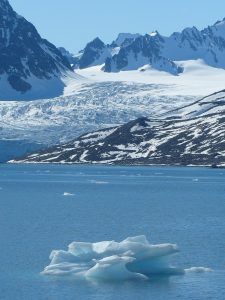 The icy climate is the coldest on the entire planet, registering at certain times the lowest points in terms of temperature.
The icy climate is the coldest on the entire planet, registering at certain times the lowest points in terms of temperature.
In fact, its average temperature is below 0º C, and it is also a very dry climate.
It is distributed, above all, towards the areas of the poles and in mountains whose relief is well above the limit for plant, animal or human life.
Being so cold, it develops a deep freezing system, so its surroundings are ice in almost the entire structure.
Where is the cold weather located geographically?
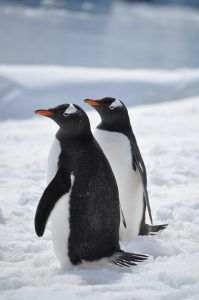 The location of the frigid climate is one of the most precise that exists because it is only found in the arctic and antarctic areas.
The location of the frigid climate is one of the most precise that exists because it is only found in the arctic and antarctic areas.
Between these two spaces, the Antarctic is the area with the strongest low temperatures, since it is an area with varied relief, while the North Pole is rather flat.
In very specific cases, it is established that the summits of some very high mountains also have icy weather. These mountains are, for example, the highest in the Himalayas, some of Alaska and the Andes mountain ranges.
Broadly speaking (and based on the poles, which is its main area of influence), the icy climate is located between latitudes 66 and 90º, both in the northern and southern hemispheres.
What characteristics does cold weather have?
Although its main characteristic is determined by the frozen environment, there are some aspects to rescue around this topic:
- Temperatures: they are always low, staying below 0º C most of the year. Only in very specific cases has it exceeded 0º C and never by more than 1 or 2 degrees. However, it has generated very low numbers in terms of temperature, even reaching -89.2º C, which is registered as the lowest on the planet.
- Precipitation: it is an excessively dry climate, without precipitation that is worth mentioning because, in any case, it does not fall in liquid form but as snow.
- Humidity: it does not exist because the precipitation that is recorded in a liquid state is not generated. Due to the way in which the sun’s rays affect, phenomena such as transpiration or evaporation are not generated.
- Winds: they are strong, cold and dense. This condition is present due to the atmospheric pressure that exists in the environment, which makes it very difficult to travel through it. In fact, because the winds are so complex, it is even more difficult to control snowfall.
- Types: even with the extreme conditions that the icy climate entails, it is possible to classify it into two types: the climate of the ice cap, which, as its name indicates, always maintains a frozen base on the ground. The other type is the nival climate, which is the one located in the mountains that are above 5,000 meters above sea level.
- Seasons: a cold season and a less cold season, which is called «summer», are expected. In the first case, which would correspond to winter, temperatures drop to -50º C or more. In the «summer» these usually stay at approximately -13º C.
What flora predominates in the cold climate?
This is the only climate where vegetation does not exist, because the soil never reaches a favorable condition for reproduction. It’s not just about lower temperatures, but also about the fact that it stays constantly frozen.
What fauna predominates in the cold climate?
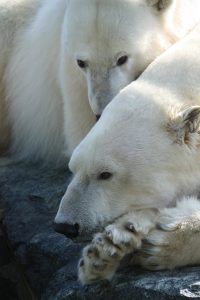 The fauna of the cold climate is almost non-existent because the conditions are complex and, in any case, there are not many sources of food supply.
The fauna of the cold climate is almost non-existent because the conditions are complex and, in any case, there are not many sources of food supply.
The largest number of species that are possible to count are at the aquatic level, because although its waters have ice, some fish survive.
At the terrestrial level it is very difficult to find any kind of fauna, especially when temperatures are lower.
Perhaps during the «summers» it is possible to see a polar bear or an arctic wolf walking, but they do not stay there during the winter.
How long is the day and night in freezing weather?
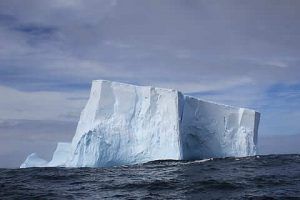 The duration of the day and night in the icy climate is a very striking phenomenon that arises from the incidence of the sun’s rays at an angle.
The duration of the day and night in the icy climate is a very striking phenomenon that arises from the incidence of the sun’s rays at an angle.
In these spaces, the summer is maintained with permanent sun, while in the winter the opposite happens, the darkness is permanent.
Yes, just as you read it, the year is divided into two parts: one illuminated and the other dark. Each one lasts approximately 6 months and occurs in the polar areas.
Can humans live in the frigid climate?
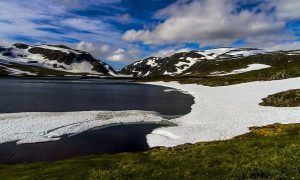 The conditions of the icy climate are especially hostile for the settlement of human life, so life is not possible in its vicinity.
The conditions of the icy climate are especially hostile for the settlement of human life, so life is not possible in its vicinity.
In addition to the fact that temperatures are very low, there is a lack of vegetation, rainfall and the strength of the winds.
All this causes that even the establishment of a place of refuge is a complex task for any human being. As we said above, in the mountains, the icy climate is above 5,000 meters above sea level.
When this height reaches 7,500 meters above sea level, it is already considered an impossible space for the development of any type of life due to the lack of oxygen. Frigid weather can also be known as glacial weather or freezing weather because of the freezing conditions that exist in it.
Bibliographic references
- The Antarctic Continent, A Miranda Saavedra – 2017 – antarticarepositorio.umag.cl
- General information on the climate of Antarctica according to the Koppen classification, G Etcheverry Alday – 2016 – antarticarepositorio.umag.cl
- The Antarctic climate as a result of natural cycles. Approximations of the past and future climatic phenomenon of the continent, MD Martínez Gómez – 2015 – antarticarepositorio.umag.cl
- Antarctic Climate Variation. Characteristics and factors that affect the Antarctic climate, E Rojas Yáñez – 2017 – antarticarepositorio.umag.cl
- Pyramid Glacier: Characteristics and recent evolution of a covered glacier. Evidence of climate change, FF Acuña – Geographical Research, 2012 – analesfcfm.uchile.cl
Maybe you are also interested in:
- Koppen climate classification: [Concept, Characteristics and Types of Climates]
- Alpine Climate: [Characteristics, Flora, Fauna and Adaptability]
- Arid Climate: [Characteristics, Flora, Fauna and Adaptability]
- Temperate Continental Climate: [Characteristics, Flora, Fauna and Adaptability]
- Continental Climate: [Characteristics, Flora, Fauna and Adaptability]
- High Mountain Climate: [Characteristics, Flora, Fauna and Adaptability]
- Climate of Argentina: [Characteristics, Flora, Fauna and Adaptability]
- Australia Climate: [Characteristics, Flora, Fauna and Adaptability]
- California Climate: [Characteristics, Flora, Fauna and Adaptability]
- Climate of Europe: [Characteristics, Flora, Fauna and Adaptability]
- Tundra Climate: [Characteristics, Flora, Fauna and Adaptability]
- Equatorial Climate: [Characteristics, Flora, Fauna and Adaptability]
- Cold Climate: [Characteristics, Flora, Fauna and Adaptability]
- Mediterranean Climate: [Characteristics, Flora, Fauna and Adaptability]
- Ocean Climate: [Characteristics, Flora, Fauna and Adaptability]
- Polar Climate: [Characteristics, Flora, Fauna and Adaptability]
- Subpolar Climate: [Characteristics, Flora, Fauna and Adaptability]
- Subtropical Climate: [Characteristics, Flora, Fauna and Adaptability]
- Subhumid Temperate Climate: [Characteristics, Flora, Fauna and Adaptability]
- Temperate Climate: [Characteristics, Flora, Fauna and Adaptability]
- Humid Tropical Climate: [Characteristics, Flora, Fauna and Adaptability]
- Dry Tropical Climate: [Characteristics, Flora, Fauna and Adaptability]

![Photo of Ambulia: [Care, Characteristics, Cultivation, Substrate and Pests]](https://www.complete-gardening.com/wp-content/uploads/2022/08/ambulia-care-characteristics-cultivation-substrate-and-pests-390x220.jpg)

![Photo of Cactus Cuttings: [Concept, Period, Rooting and Planting]](https://www.complete-gardening.com/wp-content/uploads/2022/08/cactus-cuttings-concept-period-rooting-and-planting-390x220.jpg)
